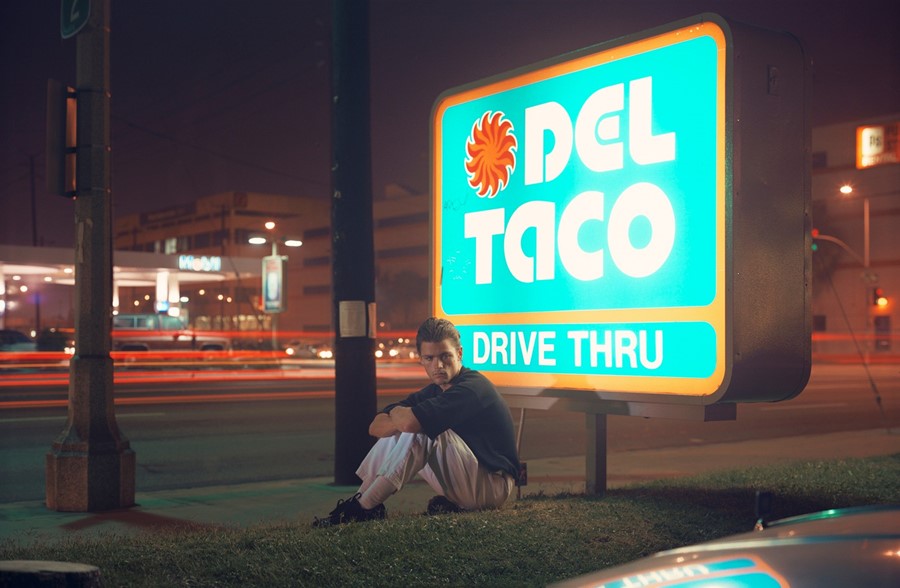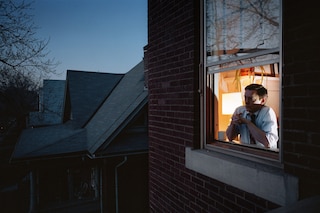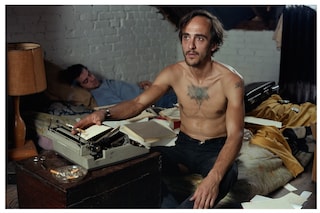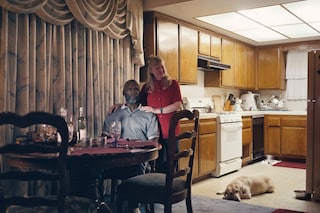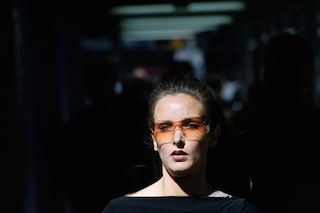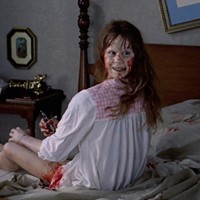The influential photographer talks hustlers, rent boys and the US culture wars
Philip-Lorca diCorcia is one of the world’s most eminent photographers, known best for his hyper-real, documentary-style tableaux. A dark cynicism permeates his work, in which he carefully stages intensely intimate moments of observation that speak to broader universal truths, from his early-90s work Hustlers on male prostitution to his newest series, East of Eden, which alludes to post-2008 societal bewilderment. The latter marks a change in methodology away from the serial motif for which he is best known, consisting of 14 large-scale images depicting a lapsarian world that Fell during the economic crash. In London to open his first British retrospective, Photographs 1975–2012, at the Hepworth Wakefield, diCorcia is on wry, misanthropic form. He dismisses fashion photography (“all I have to thank it for is my retoucher”), advertising (“loveless”), magazines (“there’s no money”) and photographic publishing (“they want a purpose: cars, girls, disasters, cats”). A lifetime’s work at the forefront of an artform that people turn to for the illusion of truth in a political climate that seeks anything but has made the world his ideal stage, albeit a faintly ominous one.
Dazed Digital: Why do you think people are so preoccupied with getting the truth from photographers rather than, say, politics or the media at large?
Philip-Lorca diCorcia: I think it’s a sense of disappointment after realising that most of the time they’re being lied to – and what medium has a stronger relationship to people’s idea of the truth than one that is supposed to be an accurate representation of reality? Photography is often mediated by the photographer but it has the capacity to be completely unmediated: whether through security camera footage or a monkey with a camera.
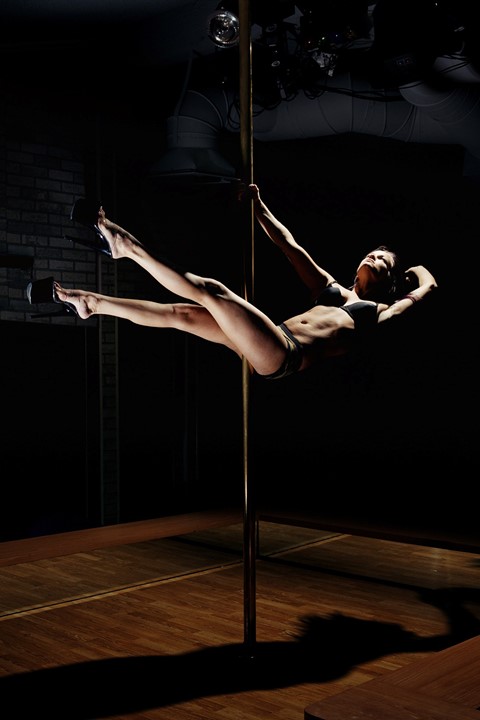
DD: Your work Hustlers was done 20 years ago: would you change anything if you were to do it now?
Philip-Lorca diCorcia: In those days there was no digital photography... So, for the 'Savage Fantasy' image, I didn’t put Bill Cosby into that photograph later. There wasn’t even a remote control for the television, so we had to change the channel all the time until we got to the right show and then we just left it on there. Nowadays, that wouldn’t happen: in the East of Eden picture 'Iolandia' the tornado was not on the television at that time we took it. I recorded the video on the same day but I put it into the photograph later. I guess I got used to doing that sort of thing when I was doing fashion photography so what I would change are the technical elements; make them a little more complex. And also, the series might find itself in another realm of life, I’m sure hustlers today are all online.
The directness of the photographs is a testament to the fact that, in a way, the hustlers are advertising themselves – although I don’t think that anyone would look at those photos and think, 'This is the best way that I can represent myself.' The lighting is meant to transform the situation in the same way that the fictions created in a film transform the reality. Anyone who’s ever been on a film set knows that the end result nothing like the moment itself.
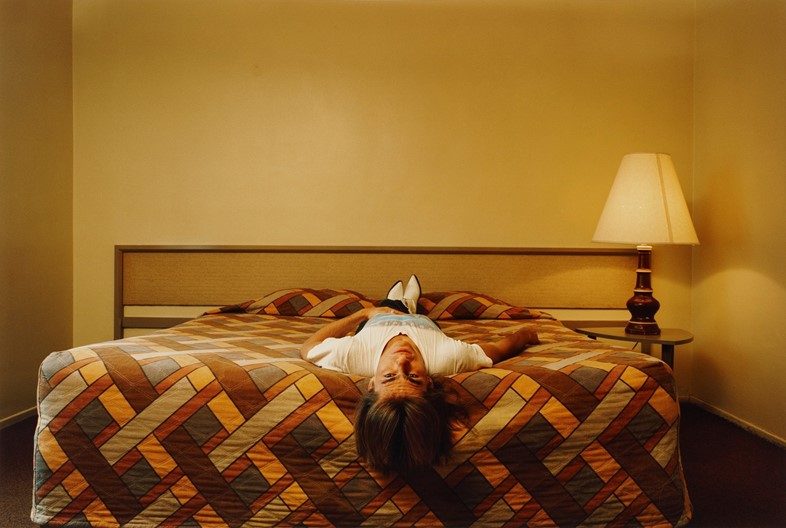
DD: The narrative of Hustlers is so tied up in the ‘American Dream’ and the cultural and political wars of the time – has there been any shift?
Philip-Lorca diCorcia: The series was almost meant to be a catalogue because these men have commoditised themselves out of desperation – and they’re in Hollywood, which makes commodities out of people anyway. In a sense there’s a change: there’s gay marriage, but a lot of the guys in that series were gay for pay and I don’t think that context has changed at all: methamphetamine is as big a drug as it ever was. Amongst young gay men, the incidence of Aids has gone way up: if you get sick, you just take the pills. It’s just that there’s nobody to demonise anymore: you can’t blame everything on Ronald Reagan. The United States hasn’t suddenly become liberal: most of the country is as conservative as it ever was, maybe more so, and everybody can see the huge divide between the right and left which has made the country almost ungovernable.
“There’s a well-known painter who makes paintings that look like they were done 30 years ago but he does it with an inkjet printer. Is that really progress now?"
DD: You’ve mentioned the media ‘fetishisation’ of 9/11, depicted in your series Lucky 13, which seems to have given the west a new common enemy. Why do you think we have built that narrative around it?
Philip-Lorca diCorcia: I think it’s a way to rally people and make them forget about the real problem. The real problem has always been the same: that there’s a huge dichotomy between the haves and the have-nots and that leaves the have-nots to things like crime and drug addiction and the haves to isolate themselves in a realm where they’re completely ignorant as to what the rest of the world is like. And that hasn’t really changed that much, apart from to become more extreme.
DD: East of Eden is a very interesting way of looking at the post-2008 economic narrative…
Philip-Lorca diCorcia: Before 2008, there was an innocence: you never need to pay your mortgage, you can buy a new car, leverage your life forever and we will emerge victorious from Afghanistan and Iraq. The couple of landscapes that are in the series are post-apocalyptic: the guy in the cowboy hat on the horse is considered to be iconic of America. And the landscape he’s in, the burned-out forest, was destroyed less than a week before… That was a lucky break on my part, I didn’t expect that.
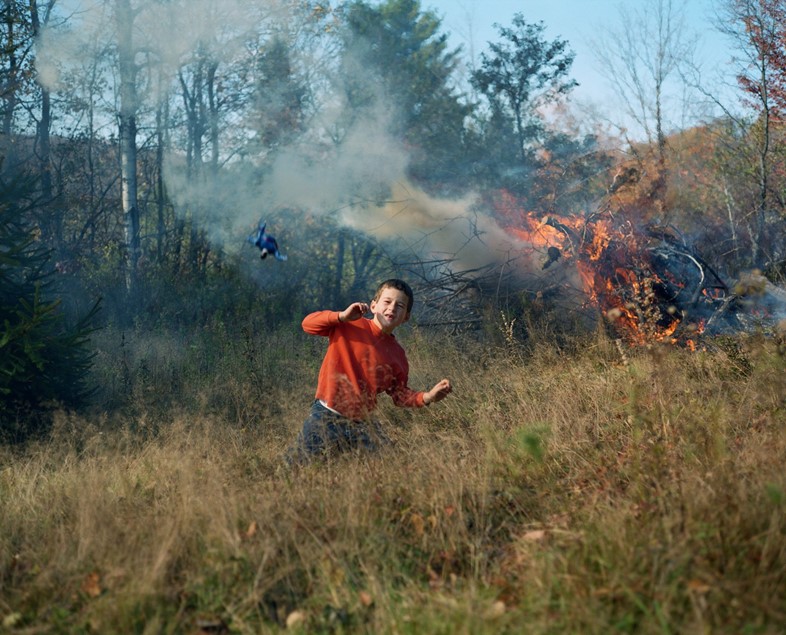
DD: A lot of those images are about devastation, a loss of innocence, the Genesis narrative of demise. You and your son are depicted in 'Abraham': are those ideas something personal to you?
Philip-Lorca diCorcia: That stuff is great for a press release, but in the end none of it matters. People respond to things because of their own personal reasons: I don’t think anybody really wants to spend time, consume, do anything with any of my work because of the backstory… but something has to get you there, drag you in to the show. I've noticed now that we live in a period of some sort of denial: you can see it in photography, in painting, suddenly everything is abstract, everything is conceptual. Even when work is politically motivated or about identity, it’s all disguised, it’s all smoke and conceptual mirrors. If we were lying to ourselves about the situation before 2008, it’s become even more frustrating in the current economic and political situation with these interminable wars. People in the world that consume and appreciate art are in complete denial: they are as bad as any politician and I hate to say that but it’s so tiring to see the same old stuff. There’s a well-known painter who makes paintings that look like they were done 30 years ago but he does it with an inkjet printer. Is that really progress now?
DD: What do you think progress would look like?
Philip-Lorca diCorcia: Me getting my hair back.
DD: Rogaine in full force?
Philip-Lorca diCorcia: Yeah! Why are we wasting all this time trying to cure the world of disease when male-pattern baldness is the real problem?
Philip-Lorca diCorcia's Photographs 1975–2012 is at the Hepworth Wakefield until June 1
